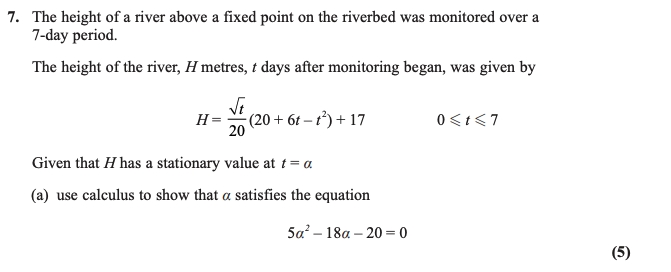AI tutor
Welcome to Bytelearn!
Let’s check out your problem:

The height of a river above a fixed point on the riverbed was monitored over a -day period. The height of the river, metres, days after monitoring began, was given byGiven that has a stationary value at (a) use calculus to show that satisfies the equation
Full solution
Q. The height of a river above a fixed point on the riverbed was monitored over a -day period. The height of the river, metres, days after monitoring began, was given byGiven that has a stationary value at (a) use calculus to show that satisfies the equation
- Differentiate with Quotient Rule: To find the stationary value of , we need to differentiate with respect to and set the derivative equal to .
- Calculate Derivatives: Differentiate with respect to using the quotient rule: .
- Apply Quotient Rule Formula: Let and . Then and .
- Simplify Derivative: Using the quotient rule, .
- Set Derivative Equal to Zero: Substitute , , , and into the quotient rule formula: .
- Clear Denominators: Simplify the derivative: .
- Final Equation: To find the stationary points, set equal to zero: .
- Final Equation: To find the stationary points, set equal to zero: . Multiply both sides by to clear the denominators.
- Final Equation: To find the stationary points, set equal to zero: . Multiply both sides by to clear the denominators. After multiplying, we get: .
